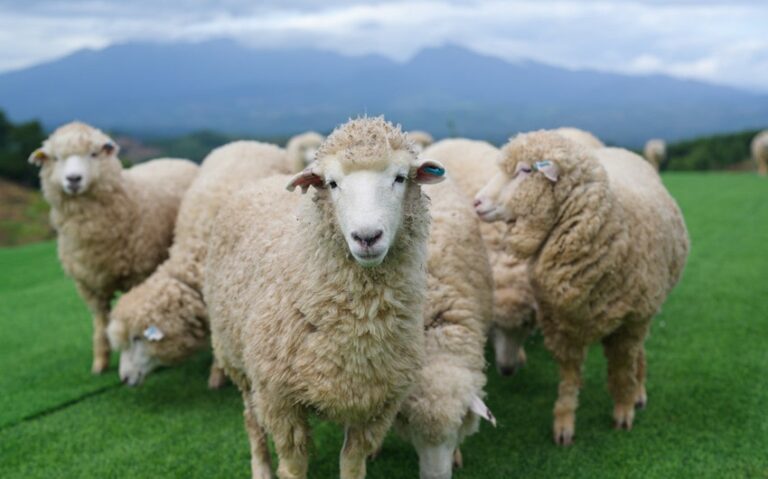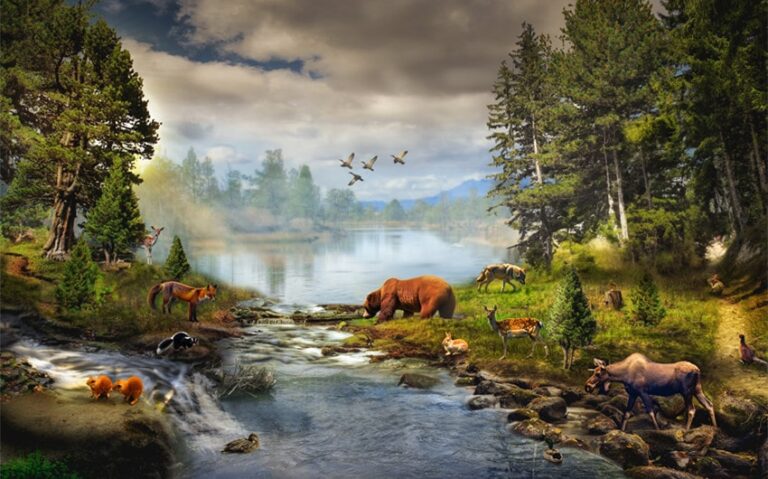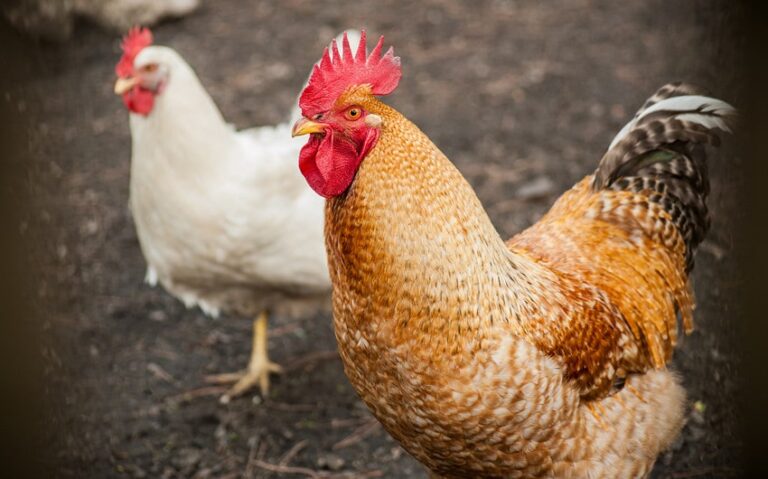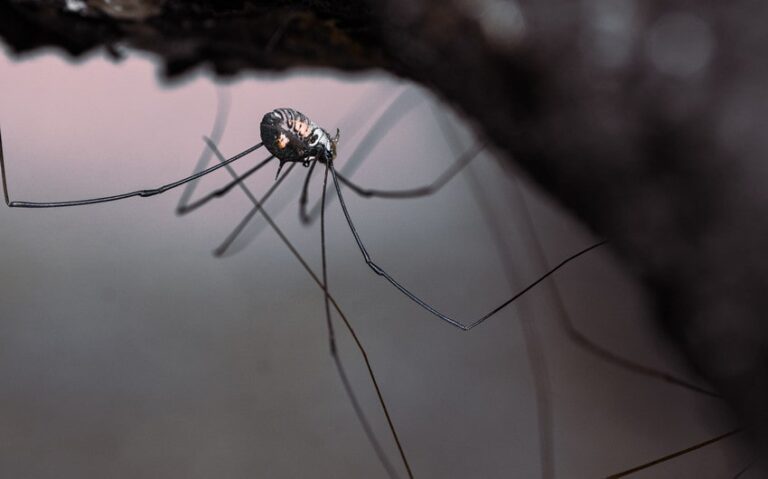What is a Barnacle? Explore 6 Important Aspects of Their Life
Barnacles are fascinating creatures often seen clinging to rocks, boats, and even whales. But what is a barnacle exactly? These small, resilient crustaceans play a significant role in marine ecosystems. Understanding barnacles can give us insights into their unique adaptations and the intricate web of life in our oceans.
Whether you’re a beachcomber who has spotted these hardy creatures on a seaside walk or simply curious about marine life, discovering more about barnacles can be both intriguing and enlightening. Let’s dive into the world of barnacles and uncover their secrets.
1. Biological Classification
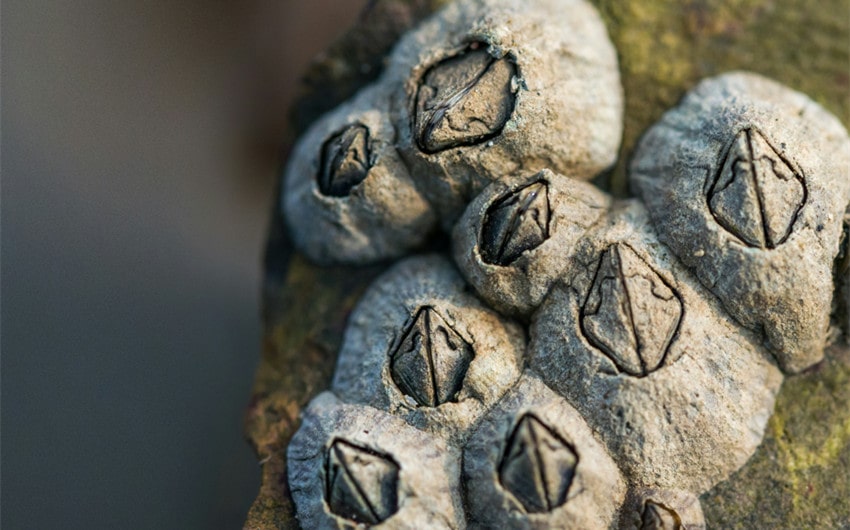
Barnacles are a unique group of crustaceans that belong to the infraclass Cirripedia within the subphylum Crustacea. Their classification reflects their evolutionary adaptations and diverse forms. Understanding their biological classification helps us appreciate their place in the broader context of marine life.
Taxonomy and Classification
Barnacles are classified under the following taxonomic hierarchy:
- Kingdom: Animalia
- Phylum: Arthropoda
- Subphylum: Crustacea
- Class: Maxillopoda
- Infraclass: Cirripedia
Within the infraclass Cirripedia, barnacles are further divided into several orders, the most notable being Thoracica and Rhizocephala. The order Thoracica includes most of the barnacles that people commonly recognize, such as acorn and goose barnacles. The order Rhizocephala contains parasitic barnacles that infect other crustaceans.
Different Types of Barnacles
Barnacles are incredibly diverse, with over 1,000 species classified within the Cirripedia infraclass. Here are some of the main types:
1. Acorn Barnacles (Balanomorpha)
-
- Description: These barnacles are sessile, meaning they attach permanently to a hard surface. They have a conical or volcano-like shape.
- Habitat: Commonly found on rocky shores, docks, and ship hulls.
- Example Species: Balanus glandula is a typical acorn barnacle found along the Pacific coast.
2. Goose Barnacles (Pedunculata)
-
- Description: These barnacles have a long, flexible stalk (peduncle) that attaches to the substrate, with a shell-like structure (capitulum) at the end.
- Habitat: Often found attached to floating debris, ships, and even marine animals like whales.
- Example Species: Lepas anatifera, also known as the common goose barnacle, is frequently seen on driftwood.
3. Rhizocephalan Barnacles
-
- Description: Parasitic barnacles that lack the hard shell typical of other barnacles. They infect other crustaceans, such as crabs and lobsters.
- Habitat: Found within the bodies of their host organisms.
- Example Species: Sacculina carcini is a well-known species that parasitizes crabs.
4. Stalked Barnacles (Scalpelliformes)
-
- Description: Similar to goose barnacles but generally found in deeper waters. They have a stalk and a more cylindrical capitulum.
- Habitat: Deep-sea environments, attached to rocks or other hard surfaces.
- Example Species: Scalpellum scalpellum is a typical deep-sea stalked barnacle.
2. Physical Characteristics
Barnacles are unique crustaceans with distinctive physical characteristics that allow them to thrive in various marine environments. Their appearance, structure, size, and coloration vary significantly among species, reflecting their adaptations to different habitats and lifestyles.
Appearance and Structure
Barnacles are characterized by their hard, calcareous shells, which provide protection from predators and environmental stresses. These shells are composed of several plates that can open and close to allow feeding while keeping the body safe from threats. The typical structure of a barnacle includes:
- Shell Plates: The outer part of the barnacle is made up of multiple calcified plates. In acorn barnacles, these plates form a cone-shaped structure that firmly attaches to the substrate. Goose barnacles have a similar structure but include a flexible stalk.
- Operculum: This is the opening at the top of the shell, covered by moveable plates. The operculum opens to allow the barnacle to extend its feeding appendages and closes to protect the barnacle when it is not feeding.
- Cirri: These are feathery appendages that extend from the barnacle’s body to capture food particles from the water. The cirri are specialized for filter feeding, sweeping plankton and detritus towards the barnacle’s mouth.
Size and Coloration Variations
Barnacles come in a wide range of sizes, from tiny species barely a few millimeters in diameter to larger ones that can reach up to 7 centimeters in diameter. Size can vary significantly even within the same species, depending on environmental conditions and available resources.
Unique Features
Several physical characteristics set barnacles apart from other crustaceans:
- Sessile Lifestyle: Most barnacles are sessile as adults, meaning they attach permanently to a hard surface. This lifestyle requires a robust attachment mechanism, provided by a strong base plate and cement glands that secrete a powerful adhesive.
- Highly Adapted Cirri: The cirri of barnacles are highly specialized for filter feeding. They extend and retract rhythmically to capture plankton from the surrounding water. This efficient feeding mechanism allows barnacles to thrive in nutrient-rich intertidal zones.
- Shell Morphology: The shape and structure of barnacle shells are adapted to their specific habitats. For instance, barnacles living in high-energy environments, such as wave-swept shores, tend to have more robust and tightly fitting plates to withstand the force of the waves.
3. Habitat and Distribution

Barnacles are highly adaptable crustaceans that can be found in a variety of marine environments around the world. Their widespread distribution and ability to thrive in diverse habitats reflect their evolutionary success and ecological significance.
Global Distribution
Barnacles are cosmopolitan in their distribution, meaning they are found in marine environments all over the world. From the icy waters of the Arctic and Antarctic to the warm tropical seas, barnacles have adapted to a wide range of environmental conditions. Their global distribution includes:
- Temperate Regions: Many species of barnacles are found in temperate regions, where they colonize rocky shores and man-made structures. Examples include the common acorn barnacle (Balanus glandula) along the Pacific coast of North America.
- Tropical Waters: In tropical regions, barnacles are often found on coral reefs, mangroves, and other coastal environments. The warm, nutrient-rich waters support diverse barnacle populations.
- Polar Regions: Some barnacle species have adapted to the extreme conditions of polar regions. These barnacles can survive freezing temperatures and long periods of darkness. For instance, the Arctic barnacle (Balanus balanus) is found in the cold waters of the Arctic Ocean.
Common Habitats
Barnacles can attach to almost any hard surface in the marine environment. Some common habitats include:
Rocky Shores: Rocky shores provide an ideal habitat for many barnacle species. The constant wave action and nutrient-rich waters make these areas prime locations for barnacle colonization. Barnacles attach themselves firmly to rocks, withstanding the force of waves and currents.
Ship Hulls: Barnacles are notorious for colonizing the hulls of ships, a phenomenon known as biofouling. While this can cause problems for maritime industries, it demonstrates the barnacle’s ability to thrive in artificial environments. The constant movement of ships through different waters provides barnacles with a variety of food sources.
Marine Animals: Some barnacle species attach to marine animals, such as whales, sea turtles, and crabs. These epibiotic relationships provide barnacles with a mobile substrate and access to nutrient-rich water currents. For example, the whale barnacle (Coronula diadema) is commonly found on the skin of humpback whales.
Coral Reefs: Coral reefs offer a diverse and complex habitat for barnacles. The intricate structures of coral reefs provide numerous attachment points and a steady flow of plankton for feeding. Barnacles on coral reefs contribute to the overall biodiversity and health of these ecosystems.
Mangrove Roots: In tropical and subtropical regions, barnacles often colonize the roots of mangrove trees. The intertidal nature of mangrove forests provides an ideal environment for barnacle attachment and growth. The roots offer protection from predators and strong currents.
4. Life Cycle and Reproduction
Barnacle Development Stages
The life cycle of a barnacle includes several stages, each characterized by specific developmental changes and behaviors. The main stages are:
Nauplius Larvae
-
- Description: The life of a barnacle begins as a free-swimming nauplius larva. This stage is characterized by a small, planktonic form that uses its appendages for swimming and feeding. Nauplius larvae are released into the water column by adult barnacles and drift with the plankton.
- Feeding and Growth: During this stage, the larvae feed on plankton and microscopic particles in the water. They undergo several molts, growing and developing through each molt.
Cyprid Larvae
-
- Description: After passing through several nauplius stages, the barnacle larva transforms into a cyprid larva. This stage is non-feeding and is focused on finding a suitable substrate for settlement. Cyprid larvae have specialized appendages and sensory organs to help them explore potential attachment sites.
- Settlement: The cyprid larva uses chemical and tactile cues to select an appropriate surface. Once a suitable site is found, the cyprid attaches head-first using a specialized gland that secretes a powerful adhesive. This attachment marks the transition from a free-swimming larva to a sessile adult.
Juvenile Barnacle
-
- Description: After settling, the cyprid metamorphoses into a juvenile barnacle. This stage involves significant morphological changes, including the development of calcareous plates and feeding appendages (cirri).
- Growth and Development: Juvenile barnacles grow by molting their exoskeleton and adding new material to their shell plates. They begin filter feeding, using their cirri to capture plankton from the surrounding water.
Adult Barnacle
-
- Description: The final stage is the adult barnacle, which is sessile and fully developed. Adult barnacles are characterized by their hard, calcareous shells and well-developed cirri for feeding.
- Reproduction: Adult barnacles are capable of reproduction and contribute to the next generation of barnacles by releasing nauplius larvae into the water column.
Reproductive Strategies and Methods
Barnacles exhibit unique and varied reproductive strategies, ensuring their success in diverse marine environments. Some key aspects of their reproduction include:
Hermaphroditism
-
- Description: Many barnacle species are hermaphroditic, meaning each individual possesses both male and female reproductive organs. This adaptation increases the likelihood of successful reproduction, especially in environments where finding a mate can be challenging.
- Mating Behavior: Barnacles have a unique mating system due to their sessile nature. They use long, extendable penises to transfer sperm to neighboring individuals. This allows them to fertilize each other without needing to move.
Cross-Fertilization
-
- Description: While hermaphroditic, barnacles typically engage in cross-fertilization, where sperm from one individual fertilizes the eggs of another. This genetic mixing enhances the diversity and resilience of the population.
- Spermcasting: In some species, sperm is released into the water column and carried by currents to neighboring barnacles. This method, known as spermcasting, allows for fertilization over greater distances.
Egg Development and Release
-
- Description: After fertilization, the eggs develop within the mantle cavity of the adult barnacle. The developing embryos are protected within the shell until they reach the nauplius stage.
- Larval Release: Once the eggs hatch into nauplius larvae, they are released into the water column. This typically occurs in synchrony with environmental cues such as tides, light, and temperature, ensuring the larvae are released under optimal conditions for survival.
5. Feeding and Diet

Barnacles are fascinating filter feeders that play a crucial role in marine ecosystems by capturing plankton and other microscopic particles from the water. Their feeding mechanisms, dietary preferences, and adaptations to different environments highlight their efficiency and ecological importance.
Filter Feeding Mechanism
Barnacles are specialized filter feeders, using their feathery appendages, called cirri, to capture food particles from the water. The process of filter feeding involves several steps. Barnacles extend their cirri out of the operculum (the opening at the top of the shell) when submerged in water.
These cirri, covered with fine hairs, increase the surface area for trapping food particles. The cirri move in a rhythmic, sweeping motion to create water currents that draw plankton and detritus towards the barnacle.
As water flows past the cirri, tiny food particles such as plankton, algae, and detritus are trapped by the hairs. The barnacle then retracts the cirri, bringing the food particles closer to its mouth, where it uses its mouthparts to scrape the trapped food particles off the cirri and ingest them.
Typical Diet and Feeding Habits
Barnacles primarily feed on plankton and detritus, but their diet can vary depending on their habitat and availability of food sources. Phytoplankton, microscopic plants abundant in nutrient-rich waters, provide essential nutrients such as carbohydrates and proteins.
Zooplankton, including small drifting animals like copepods, rotifers, and larval stages of other marine organisms, make up a significant portion of the barnacle’s diet and provide a rich source of protein.
Organic particles and debris from decomposing plants and animals, known as detritus, are also consumed by barnacles, serving as an important food source, especially in environments where plankton is less abundant. Additionally, barnacles can filter out bacteria and other microorganisms from the water, adding to the diversity of their diet and providing additional nutrients.
Feeding Adaptations
Barnacles have developed several adaptations to enhance their filter feeding efficiency and survive in various environments. The cirri are highly specialized for filter feeding, with a feathery structure and fine hairs that maximize the capture of food particles.
The ability to extend and retract the cirri allows barnacles to feed effectively while minimizing exposure to predators. Barnacles also have sensory organs that help detect changes in water currents and the presence of food particles, allowing them to optimize their feeding behavior based on environmental conditions.
When not feeding, barnacles can close their operculum tightly to protect themselves from predators and desiccation, conserving energy when food is scarce. They can also adjust their feeding rhythms based on tidal cycles and water conditions, feeding more actively during high tide when submerged and reducing activity during low tide when exposed to air.
6. Ecological Role
Barnacles play a crucial role in marine ecosystems, contributing significantly to the ecological balance and health of their environments. Their presence and activities impact a wide range of ecological processes and interactions, highlighting their importance in marine biodiversity.
Keystone Species in Intertidal Zones
Barnacles often serve as keystone species in intertidal zones, meaning their presence and activities have a disproportionate impact on the ecosystem. By occupying space on rocks and other hard substrates, barnacles create habitats for a variety of other marine organisms.
The complex structures formed by barnacle colonies provide shelter and surfaces for algae, sponges, mollusks, and other invertebrates. This increased habitat complexity enhances biodiversity and stability in intertidal ecosystems.
Influence on Plankton Populations
As filter feeders, barnacles play a vital role in regulating plankton populations. By consuming large quantities of phytoplankton and zooplankton, barnacles help control the abundance and composition of these microscopic organisms.
This feeding activity can influence nutrient cycling and primary productivity in marine ecosystems. By removing excess plankton from the water column, barnacles contribute to maintaining water clarity and quality, benefiting other marine life and supporting the overall health of the ecosystem.
Food Source for Predators
Barnacles are an important food source for a variety of marine predators, including fish, sea stars, birds, and crabs. Their abundance and high nutritional value make them a key component of the food web.
Predation on barnacles helps regulate their populations, preventing them from becoming overly dominant and allowing other species to thrive. The presence of barnacles can attract predators to specific areas, influencing predator-prey dynamics and promoting ecological balance.
Symbiotic Relationships
Barnacles engage in various symbiotic relationships with other marine organisms. For example, some barnacle species attach to whales, turtles, and other marine animals, forming commensal relationships where the barnacles benefit from the host’s mobility and access to nutrient-rich waters.
In return, barnacles may help reduce drag on their hosts by altering the surface texture. Additionally, barnacles can harbor other small organisms, such as algae and invertebrates, on their shells, creating a micro-ecosystem that supports a diverse community of species.
Biofouling and Its Ecological Impacts
Barnacles are well-known for their role in biofouling, the accumulation of organisms on submerged surfaces such as ship hulls, docks, and piers. While biofouling can have negative economic impacts, it also has ecological implications. The surfaces colonized by barnacles provide habitats for other fouling organisms, increasing local biodiversity.
However, excessive biofouling can lead to the displacement of native species and alter community structures. Understanding the ecological impacts of biofouling helps manage and mitigate its effects on marine environments.
Contribution to Nutrient Cycling
Barnacles contribute to nutrient cycling in marine ecosystems by transforming organic matter into forms that are accessible to other organisms. Their filter feeding activities remove particulate organic matter from the water, which is then processed and released as waste products.
These waste products provide nutrients for benthic organisms and contribute to detrital food webs. Additionally, barnacles’ calcareous shells, when they die, contribute to the calcium carbonate content of marine sediments, playing a role in the long-term cycling of minerals in the ocean.



